C.D. Hersh's Blog, page 44
January 17, 2023
Wednesday Special Spotlight Cookies
These are the best oatmeal cookies you’ll ever eat. Perfect for serving with tea or coffee during unexpected (or expected) visitor drop-ins and it’s also great for a dad’s birthday surprise. This recipe is guaranteed to make you smile with each bite.
BIG DADDY’S OATMEAL COCONUT COOKIES
 Photo by Monika Grabkowska on Unsplash
Photo by Monika Grabkowska on Unsplash1½ cups brown sugar
1 cup white sugar
¾ cup butter, softened
2 eggs
1 tbsp vanilla extract
2 cups all-purpose flour
1 tsp baking soda
½ tsp salt
½ tsp baking powder
1 cup oats
1 cup crispy rice cereal (such as Rice Krispies®)
1 cup flaked coconut
Preheat oven to 350° F (175° C).
Beat sugars and butter together with an electric mixer in a large bowl until smooth. Add 1 egg at a time, allowing the first to blend into the mixture before adding the next. Add the vanilla.
Stir flour, baking soda, salt, and baking powder together in a bowl. Beat into the butter mixture until just incorporated into the dough.
Fold oats, crispy rice cereal, and coconut into the dough. Mix just enough to evenly combine.
Drop cookie dough by teaspoonful onto baking sheets.
Bake until browned, 8-9 minutes.
Cool cookies slightly on baking sheets before moving to cooling racks to cool completely. Store in airtight containers.
I recommend you sample the cookies along with your favorite beverage and crack open the first book in my teen psychic mystery series, Lost and Found. You may just find yourself wanting to visit Fairy Falls.

Fairy Falls was bores-ville from the get-go. Then the animals started talking…
The Fairy Falls Animal Shelter is in trouble. Money trouble. It’s up to an old calico cat named Whiskey—a shelter cat who has mastered the skill of observation—to find a new human pack leader so that their home will be saved. With the help of Nobel, the leader of the shelter dogs, the animals set out to use the ancient skill of telepathy to contact any human who bothers to listen to them. Unfortunately for fifteen-year-old Meagan Walsh, she hears them, loud and clear.
Forced to live with her Aunt Izzy in the safe and quiet town of Fairy Falls, Meagan is caught stealing and is sentenced to do community hours at the animal shelter where her aunt works. Realizing Meagan can hear her, Whiskey realizes that Meagan just might have the pack leader qualities necessary to save the animals. Avoiding Whiskey and the rest of shelter animals becomes impossible for Meagan, so she finally gives in and promises to help them. Meagan, along with her newfound friends, Reid Robertson and Natalie Knight, discover that someone in Fairy Falls is not only out to destroy the shelter, but the animals as well. Can Meagan convince her aunt and co-workers that the animals are in danger? If she fails, then all the animals’ voices will be silenced forever.
BUY LINKS Amazon Kindle – Amazon Paperback – Barnes & Noble Mirror World Publishing ebook – Mirror World Publishing Paperback

Sharon Ledwith is the author of the middle-grade/YA time travel series, THE LAST TIMEKEEPERS, and the teen psychic mystery series, MYSTERIOUS TALES FROM FAIRY FALLS. When not writing, researching, or revising, she enjoys reading, exercising, anything arcane, and an occasional dram of scotch. Sharon lives a serene, yet busy life in a southern tourist region of Ontario, Canada, with her hubby, one spoiled yellow Labrador and a moody calico cat.
Learn more about Sharon Ledwith on her website and blog. Stay connected on Facebook and Twitter, Google+, Goodreads, and Smashwords. Look up her Amazon Author page for a list of current books. Be sure to check out THE LAST TIMEKEEPERS TIME TRAVEL SERIES Facebook page.
January 16, 2023
Tell Again Tuesday Blog Growth
How To Instantly Grow Your BlogBy Pooja G
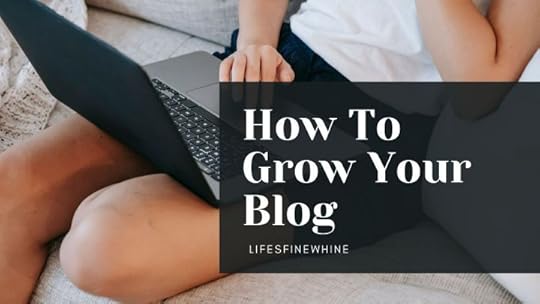
One of the most frequent questions I get asked is how I grew my blog and how others can grow theirs. I get emails, DM’s and comments asking me about this a lot. I already have a lot of posts about this topic. And I have shared a lot of my methods on here before. But I thought I would share some more since I have gotten more followers since my last post on a similar topic.
I know that I may have shared some of these in other posts but today I thought I would share the methods the are the fastest and most effective way . . .
For the rest of the blog go to:January 12, 2023
Friday Feature “The Gift”
The one-room, Cedar Fork schoolhouse across the holler from the little log cabin on the near side of Peach Mountain was a tolerable two-mile walk-in good weather. It was an enjoyable walk actually, if one had time to swing from a grapevine on top of a high cliff and drop into Cedar Fork Creek for a lazy dip or stop by the Workman’s place for a quick smoke of their cornsilk tobacco. But in snowdrifts as tall as thirteen-year-old, Lee Greene, in threadbare clothes, thin hand-me-down coat, and barely covered feet in holey socks flopping in an old pair of secondhand shoes that were several sizes too big for him, the walk that frigid morning was worse than pure misery.
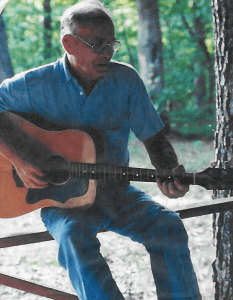 Lee’s chronically aching stomach was hollow and rumbling. His meager breakfast of cornmeal mush and sugar water was quickly wearing thin, but he had more important things than his stomach to worry about that morning. He was stewing about the paucity of milk he had drawn from his family’s cow tethered in the yard just beyond the lean-to kitchen at the back of their tiny log cabin. The two-story structure, built by Lee, his older brother, Bill and their father only five months before, comprised a common, or front room, on the main level, a primitive lean-to kitchen at the back, and a bedroom where his parents slept. The room housed the only closet in the place. A rough-hewn timber ladder gained access to the upper deck, where, in an open-to-the-front loft, all the many children slept on crude cots, or thin pads on the floor. A large ceiling-to-floor fireplace of indigenous stones in the common room on the first floor was the only source of heat in the place. Felled tree trunks supporting its roof, a porch spanned the width of the front of the log cabin.
Lee’s chronically aching stomach was hollow and rumbling. His meager breakfast of cornmeal mush and sugar water was quickly wearing thin, but he had more important things than his stomach to worry about that morning. He was stewing about the paucity of milk he had drawn from his family’s cow tethered in the yard just beyond the lean-to kitchen at the back of their tiny log cabin. The two-story structure, built by Lee, his older brother, Bill and their father only five months before, comprised a common, or front room, on the main level, a primitive lean-to kitchen at the back, and a bedroom where his parents slept. The room housed the only closet in the place. A rough-hewn timber ladder gained access to the upper deck, where, in an open-to-the-front loft, all the many children slept on crude cots, or thin pads on the floor. A large ceiling-to-floor fireplace of indigenous stones in the common room on the first floor was the only source of heat in the place. Felled tree trunks supporting its roof, a porch spanned the width of the front of the log cabin.
The soil on Cedar Fork, thin, hard, and dry, a crusty layer of sediment topping a bedrock of limestone, dolomite and shale, made for poor farming and gardening, posing a formidable challenge for growing adequate crops. Squirrels, rabbits, opossums and birds, hunted and brought in by Lee and Bill, the insufficient supply of milk from the cow, and scant eggs supplied by their paltry flock of scrawny chickens in the yard, were the only sources of protein for the family. In season, a large vegetable garden and a stand of corn were coddled into fruition in the poor soil, but only if they were favored with enough rain.
His nose and eyes crusty from yet another head cold, gloveless hands thrust into the pockets of his thin coat, and his feet turning to blocks of ice, Lee trudged on to school, his white-blond head under his hat hunkered into his shoulders. Despite the fact that he might not make it through the perpetual hardships of his life, much less that cold, windy, and snowbound morning, his soul was full of dreams, his mind of intention, his body of vigor and endurance, and on the strength of pure power of will alone, and maybe some help from the man upstairs, Lee was determined that if he got out of his childhood alive, nothing would ever encumber him again.
The schoolhouse was dark and frigid, and Lee, by design, was the first student to arrive. The door was unlocked as it always was, and Lee, halting for a few minutes to give his blood a chance to circulate again in his frozen limbs and digits, sat down on one of the benches. He would have wept if he had allowed himself to seriously consider his unfortunate circumstances—but not Lee! No, not Lee! Not the boy/man who five years in the future would be my father. He had a chance to earn fifty cents that week, and every week for weeks to come, fifty cents for building a fire in the “Warm Morning” coal-burning, heating-stove each morning before school, and that was exactly what he was going to do.”
***
“Life is difficult,” renowned psychotherapist, M. Scott Peck states in his groundbreaking book, The Road Less Traveled. The above excerpt from Guardians and Other Angles, my novel that is based on the true story of my grandparents and parents and their immediate families illustrates that my father’s early life was a testament to Peck’s pronouncement. Born in the midst of the Great Depression, my dad was the third of twelve children. Few were the hours, or even minutes, of every day that were not devoted to details of survival: scouring for food, maintaining shelter, searching for work of any kind. Like millions of others among the “Greatest Generation,” the extreme difficulties of the times forced my father to grow up on his own, primarily. Through the perils and pitfalls of life as he encountered it, he survived and thrived, and in the process evolved into perhaps the most disciplined person I have ever known. Don’t get me wrong—my dad was a fun guy. Sharing a beer or fishing with a buddy or two was high on his agenda; he was a shark at Euchre; he knew a million jokes and delivered them like a pro; he played the guitar and sang with the best of them. But getting the job done always came before pleasure. Peck calls it “delaying gratification,” which is one of the essential tools in the development and maintenance of discipline. Growth absent a consistent basis of discipline sputters and then stalls sooner or later.
My father gave me many priceless gifts during his lifetime, legacies that have endured these many years since his passing. One of the greatest of them was his talent for discipline. I am not as good at it as he was, but I will die trying.
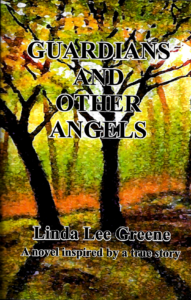 Guardians and Other Angels, multi-award-winning author Linda Lee Greene’s novel, chronicles the story of two heroic families played out against the bad and the good of the early to mid-twentieth century, years of worldwide economic depression and war, as well as the spawning of the “Greatest Generation.” Firsthand accounts of the times in authentic letters written by members of the families are peppered throughout the book.
Guardians and Other Angels, multi-award-winning author Linda Lee Greene’s novel, chronicles the story of two heroic families played out against the bad and the good of the early to mid-twentieth century, years of worldwide economic depression and war, as well as the spawning of the “Greatest Generation.” Firsthand accounts of the times in authentic letters written by members of the families are peppered throughout the book.
 Multi-award-winning author and artist Linda Lee Greene describes her life as a telescope that when trained on her past reveals how each piece of it, whether good or bad or in-between, was necessary in the unfoldment of her fine art and literary paths.
Multi-award-winning author and artist Linda Lee Greene describes her life as a telescope that when trained on her past reveals how each piece of it, whether good or bad or in-between, was necessary in the unfoldment of her fine art and literary paths.
Greene moved from farm-girl to city-girl; dance instructor to wife, mother, and homemaker; divorcee to single-working-mom and adult-college-student; and interior designer to multi-award-winning artist and author, essayist, and blogger. It was decades of challenging life experiences and debilitating, chronic illness that gave birth to her dormant flair for art and writing. Greene was three days shy of her fifty-seventh birthday when her creative spirit took a hold of her.
She found her way to her lonely easel soon thereafter. Since then Greene has accepted commissions and displayed her artwork in shows and galleries in and around the USA. She is also a member of artist and writer associations.
January 10, 2023
Wednesday Special Spotlight Promo

He saved her life. She became his muse.
Transcending time, their love was absolute—and always out of reach.
Is it too late, or do they have one more chance?
Rhapsody in Dreams is a modern-day love story with a slight mystical twist.
**
You can read the excerpt on Stella May’s blog.
**
An ebook is available now at any digital bookseller of your choice.
January 9, 2023
Tell Again Tuesday World Marketing
How to market your book globally and reach international readersBy Guest Author
If you want to expand your reader base, you should look for ways to reach international readers. Learn how to market a book globally (and why you should). . . .
For the rest of the blog go to:January 5, 2023
Friday Feature When My Life Passes
The expression “I saw my life pass before my eyes,” is generally used by someone who has had a near-death experience. While I have no idea what may occur when the end nears, I have always liked that thought, as long as one only has to recall the pleasant events.

Once, off St. Kitts, I witnessed four tiny juvenile drum fish dancing in a row before a reef.
Sometimes, I consider scenes that might appear in my head when my time comes, and I find it is a rather Forrest Gump-esque list: The night at Girl Scout camp on an island in Upstate New York, snuggled in my sleeping bag, a cool breeze wafting through the pines, lake water brushing up against the rocks. An elk in Colorado, maybe ten yards between us, his majestic antlered head and dark brown eyes freezing me in place, before he turned and disappeared silently into the forest. A dive in St. Kitts where I witnessed four tiny spotted drum fish, each no bigger than a thumbnail, long black-and-white fins waving as they danced in a row before a reef.
And now, I have a new vision to carry with me. A few days ago, in the sea off the north shore of St. Croix, we spotted three bottlenose dolphins from our dive boat. We quickly donned our scuba gear and descended to a shallow area white with sand. We knelt on the bottom and waited.
And waited.
Thirty minutes later, chilled from inactivity, we gave up, and swam away, perusing a group of coral heads down over the edge of the sand. Cold and tired we headed back toward the boat. The dive master, E.T., and I were the last in the water. We waited below the boat as other divers ascended.

While diving in St. Croix we spotted three bottlenose dolphins from our boat, so we donned our scuba gear and dropped in to join them.
Then, E.T. grunted to get my attention. She pointed at three dolphins that swam directly toward us, their snouts dipping with each gentle push of their tails. The largest, a female perhaps eight-feet long, silvery-gray with a white belly, was escorted by two smaller males. The female eyed me and guided the others over my head. I could have reached up and touched her as they glided past. Then, she dove to the bottom and stuck her nose in the sand. She stirred up a white cloud, rolled onto her back and lay on the bottom, while the males playfully nudged her. Soon, she twisted, launched herself off the sand, and they disappeared.
We waited. And they returned, over and over playing before us. Then, the female stopped, touched her tail to the sand and straightened. I had always thought of dolphins as curved creatures, but she now stood perfectly straight, snout pointed toward the sky, fins out, a signal perhaps to the males who approached and straightened as well, clinging to her sides, motionless.
They appeared as a marble statue, majestic, magical, holding the pose above the sand, her bearing that of an empress. Then she twirled and the males followed. What came next can only be described in one way: dolphin sex. I felt like a voyeur but could not turn away. I will let you fill in the rest.
At one point, overwhelmed by the beauty, this gift I’d been given by the sea, I touched my hand to my heart. When I gazed at E.T., she had done the same. We stared at one another, knowing we had shared something special.
When we finally ascended, I was speechless. Those who know me would be astounded at the idea. And I am still unsure my words here do the experience justice.
I hugged the dive master, a woman I had met just a few hours earlier.
“E.T., when I’m dying, I will remember this,” I said.
It was only then that I noticed the elegant tattoo she bore on her right hip: a dolphin.
To view my dolphin video click here.
Allow me to offer you a glimpse at my latest women’s fiction novel for you reading pleasure.
 The past and present collide when a tenacious reporter seeks information on an eleventh century magician…and uncovers more than she bargained for.
The past and present collide when a tenacious reporter seeks information on an eleventh century magician…and uncovers more than she bargained for.
In 1939, archaeologists uncovered a tomb at the Northern Arizona site called Ridge Ruin. The man, bedecked in fine turquoise jewelry and intricate beadwork, was surrounded by wooden swords with handles carved into animal hooves and human hands. The Hopi workers stepped back from the grave, knowing what the Moochiwimi sticks meant. This man, buried nine-hundred years earlier, was a magician.
Former television journalist Kate Butler hangs on to her investigative reporting career by writing freelance magazine articles. Her research on The Magician shows he bore some European facial characteristics and physical qualities that made him different from the people who buried him. Her quest to discover The Magician’s origin carries her back to a time when the high desert world was shattered by the birth of a volcano and into the present-day dangers of archaeological looting where black market sales of antiquities can lead to murder.
AMAZON BUY LINK
Anne Montgomery has worked as a television sportscaster, newspaper and magazine writer, teacher, amateur baseball umpire, and high school football referee. She worked at WRBL‐TV in Columbus, Georgia, WROC‐TV in Rochester, New York, KTSP‐TV in Phoenix, Arizona, ESPN in Bristol, Connecticut, where she anchored the Emmy and ACE award‐winning SportsCenter, and ASPN-TV as the studio host for the NBA’s Phoenix Suns. Montgomery has been a freelance and staff writer for six publications, writing sports, features, movie reviews, and archeological pieces.
When she can, Anne indulges in her passions: rock collecting, scuba diving, football refereeing, and playing her guitar.
Learn more about Anne Montgomery on her website and Wikipedia. Stay connected on Facebook, Linkedin, and Twitter.
January 3, 2023
Wednesday Special Spotlight Six and a Half Tips

You don’t have to be British to enjoy hand-made English muffins. This recipe is an easy menu addition for Sunday morning brunch or a special breakfast. English muffins are a snap to prepare, require only an hour to rise, cook quickly on a griddle or frying pan (no heating the oven!) and taste great, either plain or with butter, jam, or your favorite topping. An added bonus is the delicious, yeasty scent of fresh bread that fills the kitchen.
Here are tips to help you make perfect muffins.
1. While the yeast is dissolving, fill a 13” x 9” pan with hot water and place it in your unheated oven. Muffins rise best in a warm, humid environment.
2. If your recipe calls for honey, spritz your measuring spoon with cooking spray. The honey will slide right off the spoon.
3. Instead of using a rolling pin and cookie cutter to form your muffins, divide the dough into even parts. Then press out the dough pieces in your hamburger patty mold. You’ll get just-the-right-size, perfectly round muffins.
4. Once your muffins have risen, hand-transfer them to the heated griddle. They’ll keep their shape better than if you try to slip a spatula beneath them.
(Bonus tip: Prefer using a spatula? Dip the edge in cornmeal so it slides easily under the muffins.)
5. To test for doneness, lightly tap the top of the muffins with your fingertip. A hollow sound means your muffins are cooked.
6. When you’re ready to toast, split the muffins with a fork instead of a knife. Your toppings will fill the resulting nooks and crannies.
And here’s the perfect recipe for Perfect English muffins.
What you’ll need:
2-3 quart bowl
Standard-size cookie sheet
Griddle or frying pan
1 package yeast
1 cup warm water
3 cups flour (all-purpose or whole wheat)
3/4 cup shortening
2 tablespoons honey
1 teaspoon salt
Cornmeal
Dissolve yeast in bowl in warm water for five minutes. While yeast is dissolving, sprinkle cookie sheet with a light coating of cornmeal.
Add flour, shortening, honey and salt to yeast-and-water-mixture to form dough.
Coat dough with flour; knead until elastic.
Divide dough into 12 equal balls. Use a hamburger patty mold or the flat end of a glass dipped in flour or sprayed with cooking spray to flatten each ball into a 3-inch circle. Put the muffins on the cookie sheet as you form them.
Cover the cookie sheet and let the muffins rise for an hour.
Heat the griddle or frying pan to 375 degrees (no oil necessary).
Cook the muffins, turning once, until golden brown on both sides.
Split with a fork, toast, and enjoy with your favorite topping.
 Once upon a time there was a mother/daughter author duo named Helen and Lorri, who wrote as HL Carpenter. The Carpenters worked from their studios in Carpenter Country, a magical place that, like their stories, was unreal but not untrue. Then one day Lorri left her studio to explore the land of What-if, and like others who have lost a loved one the magical place lost much of its magic. But thanks to family, plus an amazing group of wordsmiths named Authors Moving Forward (AMF), the magic is slowly returning.
Once upon a time there was a mother/daughter author duo named Helen and Lorri, who wrote as HL Carpenter. The Carpenters worked from their studios in Carpenter Country, a magical place that, like their stories, was unreal but not untrue. Then one day Lorri left her studio to explore the land of What-if, and like others who have lost a loved one the magical place lost much of its magic. But thanks to family, plus an amazing group of wordsmiths named Authors Moving Forward (AMF), the magic is slowly returning.
Helen Carpenter loves liking and sharing blog posts from other authors. She lives in Florida with her husband of many years and appreciates every day, especially those without hurricanes.
Stay connected on her blog and Facebook .
January 2, 2023
Tell Again Tuesday Ask the hard questions
Creating an Author Brand without the HustleBy Sharon Ledwith

I recently embarked on an identity quest for my author brand for the purpose of purging what wasn’t working, and amplifying what was working for me in my author life. The ‘Hustle Culture’ eventually wore me down, and the Covid-19 pandemic gave me a new perspective on what was important and what wasn’t in my personal life. Though globally devastating, the pandemic forced us to look in the mirror and ask those hard questions. . . .
For the rest of the blog go to:December 29, 2022
Friday Feature New Year Wishes
May the coming year find you healthy, happy, and reading many books.

Thanks for following us this year. We hope you will come back next year, as there will be new books and more authors to read about.
December 27, 2022
Wednesday Special Spotlight Christmas Dressing
This year seems to have zipped by much too fast. Our family is already hinting for me to cook their favorite dishes for the holidays. One wants a ham with gravy from drippings. Another is pleading for green bean casserole, while another wants fresh asparagus spears and dinner rolls. Me, I have a sweet tooth and am looking forward to a home baked apple pie, of course ala mode, for dessert.  One thing the entire family is looking forward to is my special dressing. Here’s the recipe for you.
One thing the entire family is looking forward to is my special dressing. Here’s the recipe for you.
CRAISIN-WALNUT DRESSING 1 bag seasoned breadcrumbs, or mixed breadcrumbs
1 bag seasoned breadcrumbs, or mixed breadcrumbs
1½ cup chicken stock, just enough to moisten breadcrumbs
2 tbsp. butter
1 onion, chopped
¼ cup celery, chopped
⅓ cup dried craisons, dried cranberries or raisins
¼ cup chopped walnuts
Salt & pepper to taste
Preheat oven 350° F.
Soak craisins, or raisins, in warm water to soften for fifteen minutes.
Melt butter in a frying pan. Sauté celery and onion until opaque, about 7 minutes.
Drain craisins. Combine all ingredients in a medium size bowl, then season with salt and pepper. Pour chicken stock to moisten ingredients and mix lightly.
Grease an oven safe pan them scoop in mixture.
Bake 25 – 30 minutes.
Merry Christmas,
Emma
Here’s a peek at Emma’s Regency Christmas collection to put you in the holiday spirit.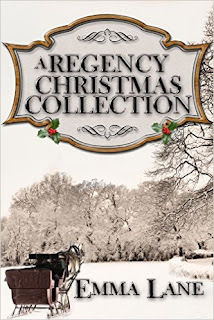
A Wild Wicked Duke
After a cruel family betrayal, Caroline Engelson vows the wicked duke will never regain her love unless he first earns her respect, no matter how fervently she longs for his kisses.
A serious accident delivers the wicked duke into Caro’s care, but she is shocked and hurt when he refers to her teen years as the ‘brat with tangled curls.’ Caro is all grown up now when the wicked duke tries to take advantage of her emotions, even as he turns the orderly household into total chaos with his ducal roars. To his astonishment, his best friend’s sister is made of sterner stuff. The situation changes drastically when Caro learns of a shocking family secret..
A Duke Finds Love
Young love is disrupted and the couple parted, but their unsympathetic parents fail to extinguish the strong bond between the two.
Roseland, left pregnant by the duke’s son, weds a neighbor, mistaking that her lover has been forced to marry another. A war and five years later, the two face a second chance, but despite their deep love for one another, impediments must be faced before happily ever after will be theirs at long last.
Beloved Soldier Returns
A wounded British soldier faces amnesia and frustrating dreams, but is finally well enough to reclaim his fiancée and his heritage when a gypsy woman arrives to share an important secret.
Robert Cooper-Hanton, a soldier who fought against Napoleon at Waterloo, is seriously wounded and suffers amnesia but survives in a gypsy camp for three years. Pockets of memory are still missing, leaving him with dreams of people with no names, when he makes the decision to begin his journey home. He has no conscious remembrance of a fiancée he left behind but is not surprised to learn that a cousin has usurped his property. When neighborhood friends reveal the fact of his engagement to Lynda Clarington, his memory of her returns in a flash and he recognizes the woman of his dreams.
Lynda had struggled without much success to accept her loss and is overjoyed to learn that Cooper is alive. She has loved him since childhood, but can she adjust to a man who seems irrevocably changed? When a gypsy woman shows up searching for Cooper, Lynda is plagued with doubt. Will Cooper manage to reunite with his old life and the woman he loves or will he remain lost in his hazy memories, dreams and a changed reality?
Dark Domino
Sarah Louise and Ethan have loved each other all their lives, but a war and time apart may have jeopardized their relationship.
Ethan has been away at war for six long years—without a single letter to the young girl he left behind. He is certain she has forgotten him, but he is still drawn to her. Dressed for a masquerade in a dark domino, he leads her to the garden and tries to steal a kiss. Sarah does not know why the man in the dark domino is so familiar, and why a stranger should give her a feeling of home. When Ethan reveals his identity, Sarah’s anger and hurt overwhelm even her love. Can a new life be built on the foundations of a first love? Or will the Dark Domino remain alone forever?
BUY LINK
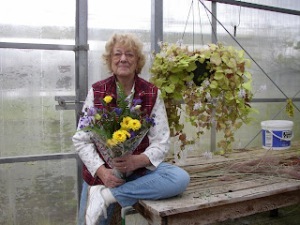
Emma Lane is a gifted author who writes under several pen-names. She lives with her patient husband on several acres outside a typical American village in Western New York. Her day job is working with flowers at her son’s plant nursery. Look for information about writing and plants on her new website. Leave a comment or a gardening question and put a smile on Emma’s face.



